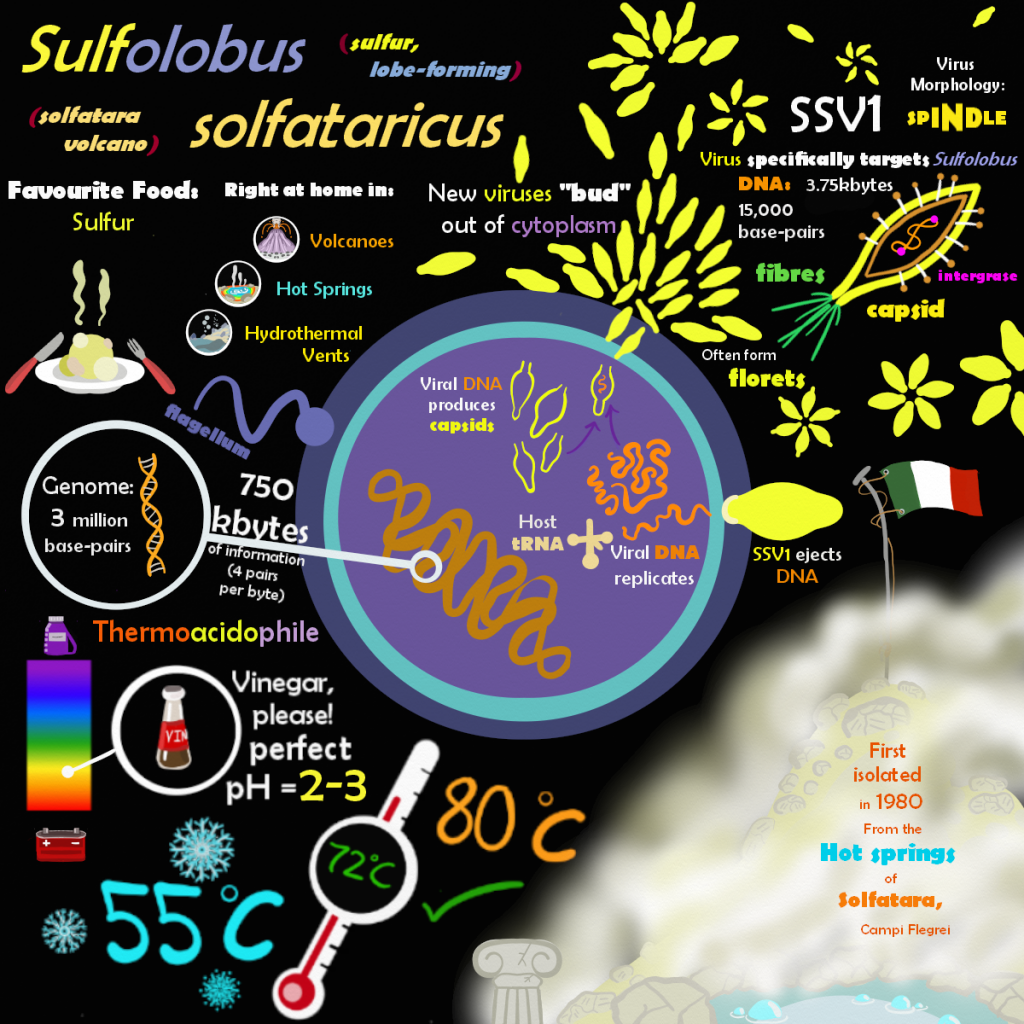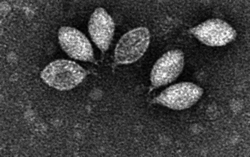
Microbe Monday: Sulfolobus solfataricus
Howdy!
It’s Microbe Monday!
Today, we are presenting you not one, but two microbes! A sulfate-reducing Archaea and a spindle-shape virus!
Sulfolobus solfataricus was originally isolated from the Sulfatara hot springs in Italy. It is a mobile thermoacidophile Archaea as it has a clock-wise flagellum and is found in hot and acidic environments such as hot springs, volcanoes, and hydrothermal vents. Sulfolobus is a sulfate-reducer that uses sulfur as an energy source and converts it into sulfuric acid.
SSV1, which stands for Sulfolobus spindle-shape virus 1, is very specific and infects only a few strains of Sulfolobus. It was isolated from the Bebbu hot springs in Japan. Spindle-shaped viruses have only been isolated on Archaea so far.

Viral and prokaryotic (bacteria and archaea) genomes greatly vary in size. For example, Sulfolobus solfataricus genome is ~ 3,000,000 base pair long, while SSV1’s is ~15,000 bp. If you compare the genome sizes to text files, the archaeal genome would correspond to a 750 kbytes file while the viral genome would be contained in 3.75 kbytes. Think about all the differences in information content!
See you next Monday to learn more about the fascinating world of microbes!